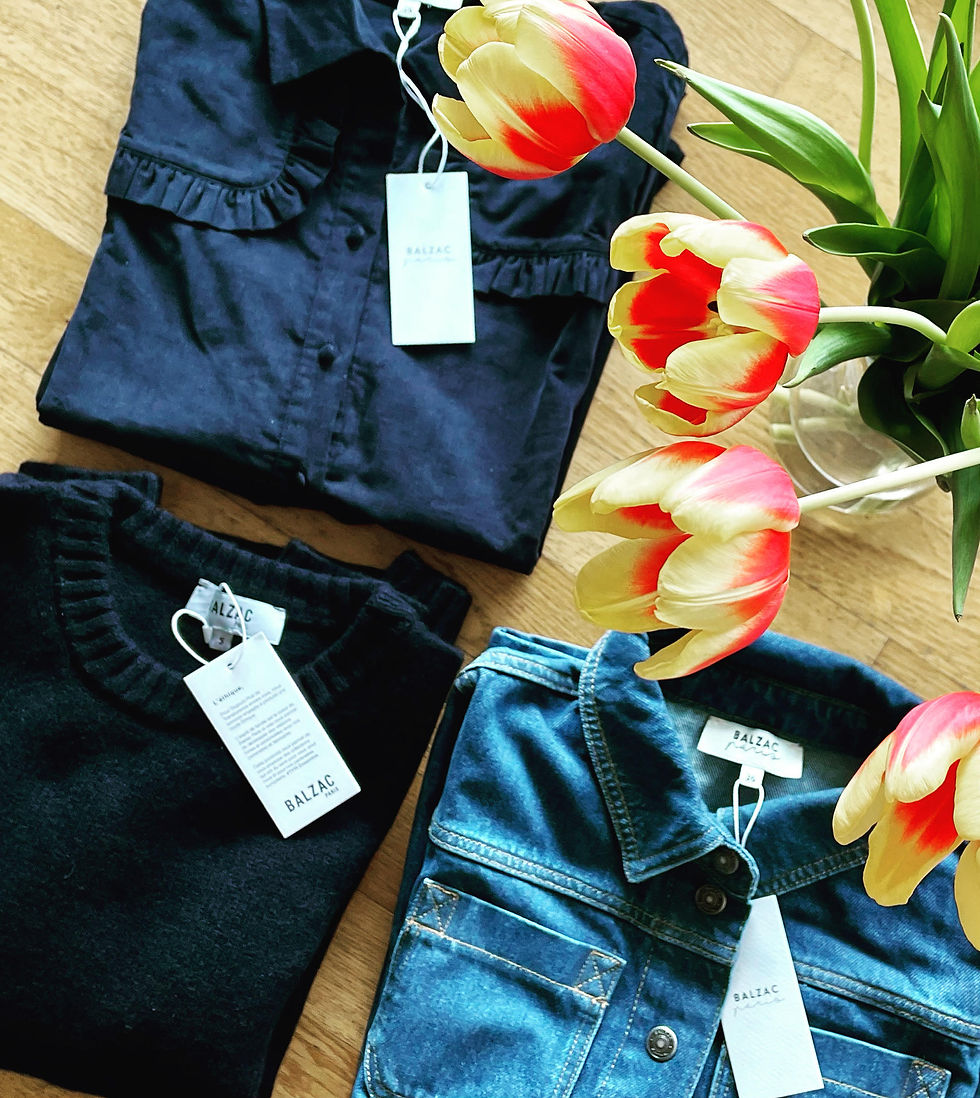Revisiting my wardrobe
- Marie

- 1 mars 2021
- 3 min de lecture
As I took advantage to some days off to clean and clear my home, like an early Spring cleaning more or less, I kept on "Marie-Kondoing" my things and sorting out clothes to give-away. For some time our guest room hosted a large amount of bags and boxes, with a clear split in purpose:
What we should keep for the future, as a legacy of "our children being children": baby clothes that we want to give them when they get their own kids, memories to ourselves
What can be given to friends, neighbours and people, in good shape and with the hope that clothing items and other misc. stuff find a good second home.
Things that are too damaged to be given away and which will make their way to the recycling station.
I took the occasion to try things that had been hanging untouched in my wardrobe for much too long.
You surely have some of these, too: the "what if" stuff. What if I am invited at a wedding? What if I have a job interview? What if it is too hot/too cold?
Combine these "what if's" with the "I wish's" ("I wish I could still fit in this dress" is a good example) and you generally ends up with a a pile of things to further sort out.
Part of the sorting process has been to also question the origins of my closet. And it's been a pretty obvious one to do: the biggest chunk comes from Zara. Over time I have really put care and thoughts over what I buy from Fast Fashion brands (despite a few fails here and there), and I've had many items for years now. But the negative environmental impact (Refer to an old article about Clear Fashion, an app to decrypt brands' CSR/ESG performance) and the seem-to-be-missing supply chain due diligence (Zara for instance is linked to the tragedy around the Uyghur workforce in China) are continuously in my mind, and there is a continuous sense of guilt over my head when I enter a shop (needless to say, this guilt as an environmentalist is often particularly tiring and depressing).
So, how am I trying to change?
First, let's consider only buying what I really need, and as usual avoid compulsive shopping. That seems to be obvious but it's sometimes not easy to implement, it's like increasing self-discipline to the next level.
Next is step is to exhaust things properly, but also remain reasonable and guilt-free. When meeting with a dear neighbour the other day, I noticed that my pair of Converse was given up on life and the sole was open. I love these shoes and have been wearing them non stop irrespective of the weather. Same for my boots, which are experiencing now the same technical issues. Both are destroyed and cheap enough to not justify any repair, and they will eventually reach the bin rather than any give-away station. But what my neighbour said opened also my eyes: I should not feel guilty to move on and purchase new ones.
Next then is to purchase responsibly. By this I mean either by doing the necessary homework to inform myself on the brands, their environmental and social commitments, their supply chain etc...and being ready to spend more but for ultimately better products, and/or commit to use them better and longer, until death do us part.
For this I have increased the amount of information sources to educate myself. Sorry, these are in French, but I would like to suggest the following for whoever wants to learn more about sustainability in the fashion industry:
Nouveau Modele, weekly podcast regarding committed, responsible fashion
The Greenimalist, Instagram account of Fanny who's been decrypting the fashion industry
Iznowgood and her online generator for responsible/ethical fashion brands
So as an example, I made my first purchase with Balzac Paris (see pic) to get long-lasting pieces (a shirt, a denim jacket and a pullover). I consider these investments: importing anything into Switzerland will cost you an extra arm in the process. Quality is amazing, everythig is produced in Europe (Many pieces in France even), and most of the textiles are GOTS (Global Organic Textile Standard) or otherwise certified.
Another purchase is from Olly Lingerie, which uses GOTS certified materials, recycled lace and tencel to design the cuteness of lingerie products.

Commentaires